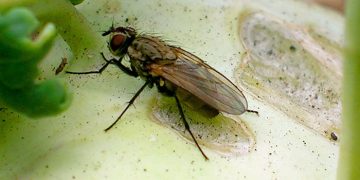The cabbage root fly is a major pest that can cause significant damage to brassica crops such as cabbage, broccoli, and Brussels sprouts. This article will discuss the latest data and strategies for controlling the cabbage root fly and protecting your crops.
According to recent data from the University of Minnesota Extension, the cabbage root fly, also known as Delia radicum, is a major pest of brassica crops. The larvae of the fly can cause damage to the roots, which can lead to stunted growth, wilting, and even death of the plant.
One effective way to control the cabbage root fly is through the use of physical barriers such as fleece or mesh covers to prevent the adult flies from laying their eggs near the roots of the plants. Another strategy is to use insecticides, but it is important to choose products that are specifically targeted towards the cabbage root fly and to follow label instructions carefully.
In addition, cultural practices such as crop rotation, removing plant debris after harvest, and avoiding planting brassica crops in the same location year after year can help to reduce cabbage root fly populations and prevent future infestations.
In conclusion, the cabbage root fly is a serious threat to brassica crops, but there are effective strategies for controlling it. By using a combination of physical barriers, insecticides, and cultural practices, farmers and agricultural professionals can protect their crops and ensure a successful harvest.
#CabbageRootFly #DeliaRadicum #BrassicaCrops #CropProtection #Insecticides #Agriculture #Farming #PestControl #PhysicalBarriers #CropRotation #PlantDebris #MeshCovers #CulturalPractices































